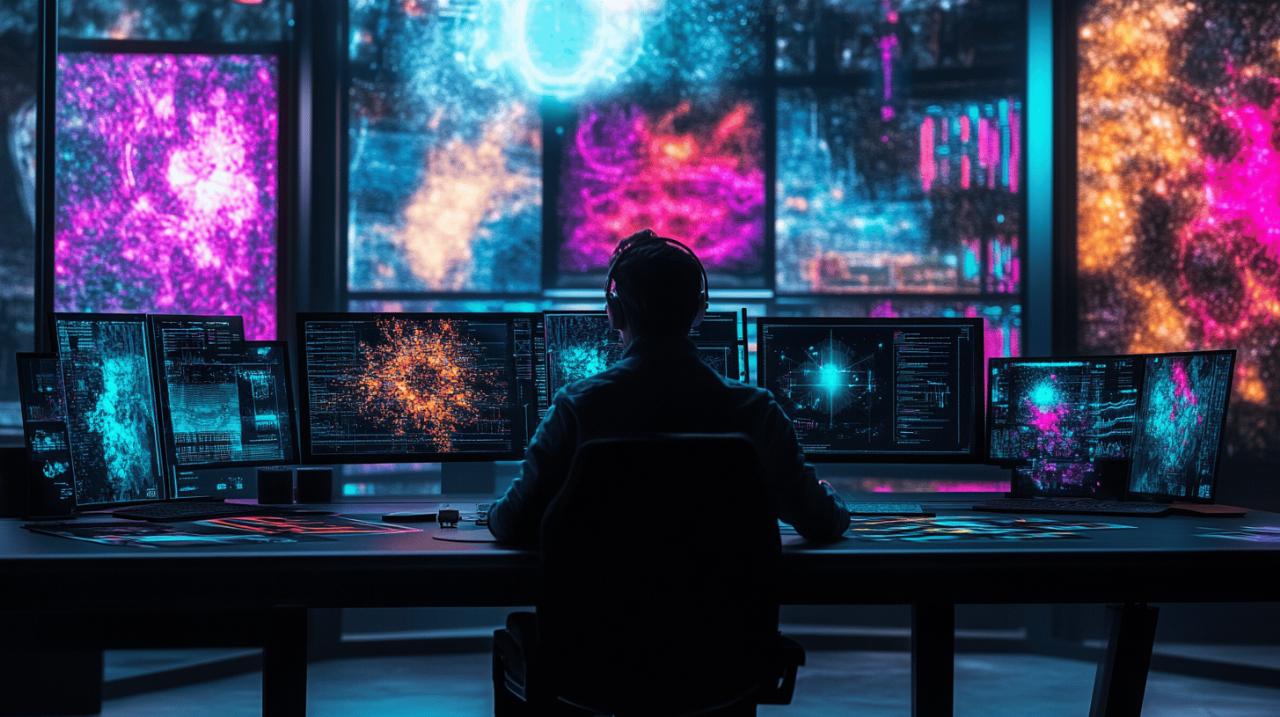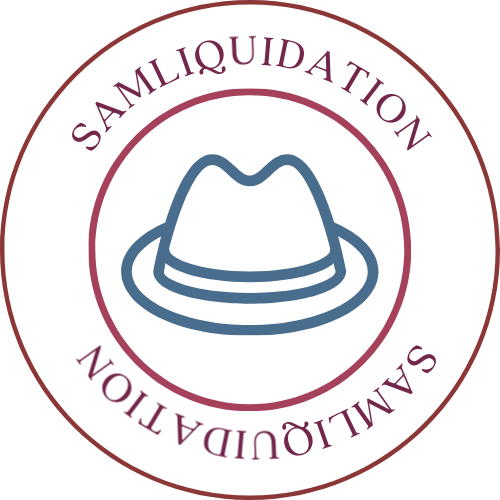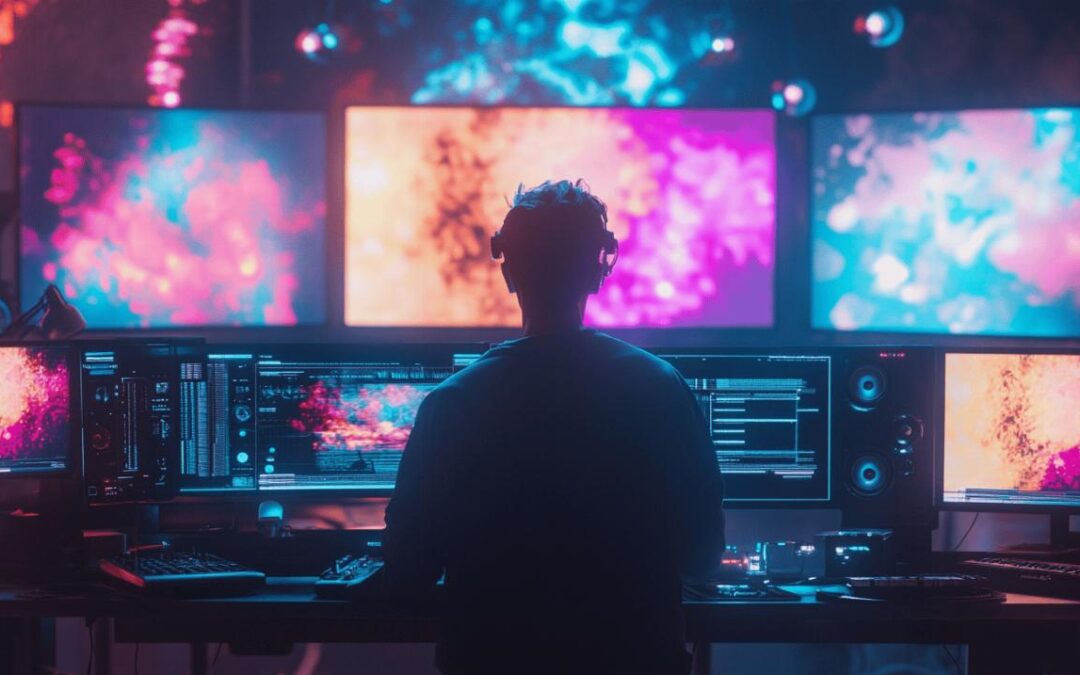The landscape of visual creation is undergoing a profound transformation with the advent of GPT Image technology, reshaping how artists, designers, and content creators bring their visions to life. This innovative approach marries cutting-edge AI with human creativity to produce stunning visuals from simple text descriptions, democratizing artistic expression across industries.
Revolution in digital artistry
The emergence of AI-powered image generation marks a significant shift in creative workflows. Tools like DALL-E, Midjourney, Stable Diffusion, and Nation AI now enable both professionals and amateurs to translate concepts into visuals without extensive technical training. These platforms leverage sophisticated neural networks and deep learning algorithms that analyze vast datasets to interpret text prompts and generate corresponding images.
Breaking traditional visual creation boundaries
The conventional barriers of visual content creation are rapidly dissolving as GPT Image technology empowers users to manifest their ideas without specialized skills or expensive software. Artists can now experiment with styles, compositions, and concepts at unprecedented speeds. Through detailed text prompts, creators guide the AI toward specific aesthetic outcomes while exploring creative territories previously inaccessible. The integration of CLIP technology ensures stronger correlation between textual descriptions and visual outputs, while diffusion AI removes noise to enhance clarity in high-resolution images.
Merging AI capabilities with human artistic vision
The most compelling aspect of this creative revolution lies not in replacing human creativity but amplifying it. When artists collaborate with GPT Image systems, they gain a powerful ally that can rapidly prototype concepts, generate variations, and streamline repetitive design tasks. This synergy between human imagination and AI processing power enables brand asset creation, marketing materials development, and digital art production with remarkable efficiency. The technology continually learns new styles and concepts, making it an increasingly versatile tool for visual expression across marketing, entertainment, graphic design, and e-commerce sectors.
Gpt image technical framework
AI-powered image generators are revolutionizing visual content creation through sophisticated neural networks and deep learning algorithms. These technologies enable both professionals and amateurs to transform text descriptions into stunning visuals without extensive technical skills. Tools like DALL-E, Midjourney, Stable Diffusion, and Nation AI have democratized the creative process by allowing users to generate high-quality images from simple text prompts.
Core architecture powering visual generation
Deep learning algorithms form the foundation of GPT Image technology, analyzing vast datasets to create unique artwork. The neural networks break down and reconstruct complex patterns from text input, enabling precise visual generation. CLIP technology plays a crucial role by matching images to text descriptions, ensuring the AI accurately interprets user intent. MyImageGPT, supported by Botnation, exemplifies this approach by continuously learning new styles and concepts to improve output quality. The architecture enables text-to-image conversion through sophisticated pattern recognition systems that transform written descriptions into visual elements with remarkable accuracy.
Advanced algorithms behind realistic image creation
Stable Diffusion generates highly detailed and realistic images by employing Diffusion AI to remove Gaussian noise, enhancing clarity and definition. This technique allows for the production of high-resolution visuals suitable for professional applications. Platforms like Nation AI offer detailed customization options for fine-tuning outputs, allowing users to adjust style parameters, color schemes, and compositional elements. The latest innovations include GPT-4o's ability to render images with 15-20 distinct elements and produce visuals with legible text. Adobe Firefly provides professional-grade tools that allow users to generate graphics and visual elements with unprecedented precision. These advanced algorithms have transformed creative workflows across industries, from marketing and entertainment to graphic design and e-commerce.
Practical applications across industries
AI-powered image generation is revolutionizing visual content creation, making sophisticated design capabilities accessible to both professionals and amateurs alike. Tools like DALL-E, Midjourney, Stable Diffusion, and MyImageGPT are transforming how we approach visual assets by converting text prompts into detailed images. These systems utilize sophisticated neural networks and deep learning algorithms that analyze vast datasets to create unique artwork with customizable style, color, and compositional elements.
Marketing transformations through AI-generated visuals
The marketing landscape is experiencing a significant shift through AI-generated visuals. GPT-4o has introduced remarkable image generation capabilities that allow marketers to create on-brand visual content quickly and efficiently. These AI systems can render images with 15–20 distinct elements accurately and produce visuals with legible text—critical features for marketing materials. Brands now leverage this technology to generate customized visuals for different audience segments, enhancing personalization in their campaigns. Tools like DALL-E 3, Leonardo AI, and Adobe Firefly are leading this transformation, enabling marketing teams to produce high-quality images for campaigns and social media without extensive technical skills. This democratization of visual creation allows marketing professionals to iterate rapidly through concepts that previously would have required significant resources and specialized talent.
Design workflow integration and efficiency gains
The integration of AI image generation into design workflows has yielded substantial efficiency gains across creative industries. Design teams at organizations like Polar London have embraced AI-powered toolkits to redefine their creative processes, automating repetitive tasks while allowing designers to focus on ideation, strategy, and refining creative outputs. This workflow optimization translates directly to faster design iteration cycles and reduced costs by eliminating time-consuming manual tasks. AI tools including Midjourney, DaVinci, Uizard, and Adobe Firefly now form part of an expanded creative toolkit that elevates content creation. The technology serves as a creative catalyst, enabling designers to rapidly visualize concepts and explore stylistic variations that might otherwise remain unexplored. By leveraging text-to-image technology, professionals across graphic design, entertainment, and e-commerce can produce high-resolution visual assets that enhance product presentations and improve overall customer experience while maintaining brand consistency.
Creative accessibility for non-designers
GPT Image technology is revolutionizing visual content creation by breaking down traditional barriers to entry. This AI-powered advancement puts professional-quality design capabilities into the hands of anyone with a text prompt, regardless of their design background or technical expertise. Neural networks and deep learning algorithms form the foundation of these tools, analyzing vast datasets to create unique artwork that previously required years of specialized training.
Democratizing visual content production
AI image generation is transforming the creative landscape by making visual production accessible to everyone. Tools like DALL-E, Midjourney, Stable Diffusion, and Nation AI have eliminated the steep learning curve associated with traditional design software. The technology continually learns new styles and concepts, allowing users without design skills to generate logos, marketing materials, and brand assets through simple text descriptions. This democratization means small businesses, content creators, and marketers can now produce high-quality visuals without hiring specialized designers or investing in expensive software. The integration of CLIP technology enhances the accuracy of matching text prompts to visual outputs, ensuring users get results closely aligned with their creative vision.
Turning text prompts into professional-quality imagery
The magic of GPT Image lies in its ability to transform written descriptions into striking visuals. Users can generate highly detailed and realistic images by crafting specific text prompts that guide the AI toward their desired creative vision. Tools like Adobe Firefly, DALL-E 3, and Leonardo AI enable fine-tuning through customization options for style, color, and compositional elements. Advanced systems like Stable Diffusion generate high-resolution images using sophisticated diffusion AI techniques that remove Gaussian noise to enhance clarity. This capability allows for rapid prototyping and iteration, streamlining the creative process and enabling users to produce multiple versions quickly. GPT-4o further expands these capabilities, allowing users to render images with 15–20 distinct elements accurately and even produce images with legible text, making it particularly valuable for creating tailored visual content for different audience segments.
Future trajectory of gpt image technology
GPT Image technology stands at the forefront of a creative revolution, transforming how we approach visual content creation. This AI-powered technology combines sophisticated neural networks with deep learning algorithms to convert text prompts into stunning visuals. As platforms like Nation AI, DALL-E, Midjourney, and Stable Diffusion continue to evolve, they're reshaping our understanding of digital art creation, making it accessible to both professionals and amateurs alike. These tools analyze vast datasets to create unique artwork, allowing users to adjust style parameters, color schemes, and compositional elements with unprecedented ease.
Emerging capabilities and feature developments
The next generation of GPT Image technology is poised to deliver remarkable advancements in visual content creation. Integration of CLIP and Diffusion AI technologies is significantly improving the correlation between text prompts and visual outputs, resulting in more accurate representations of creative visions. Advanced deep learning algorithms now produce increasingly high-resolution images, with Stable Diffusion leading the way in quality enhancement. MyImageGPT exemplifies this evolution, continually learning new styles and concepts while offering extensive customization options. GPT-4o introduces powerful capabilities for marketers, enabling the creation of on-brand visual content quickly and efficiently. This new technology can render images with 15–20 distinct elements accurately and produce visuals with legible text. The future landscape will likely feature more intuitive interfaces, greater customization options, and seamless integration with existing creative workflows. These developments are democratizing visual creation, enabling users without extensive technical skills to produce professional-quality images for presentations, blogs, marketing campaigns, and more.
Ethical considerations in AI-powered visual creation
The rapid advancement of AI image generation brings critical ethical questions to the forefront. Copyright infringement remains a primary concern, as AI systems trained on existing artwork raise questions about intellectual property rights and fair use. The potential for misinformation through deceptively realistic AI-generated images demands careful consideration, especially as the technology becomes more sophisticated. This challenge extends to identity protection and privacy concerns when AI systems generate realistic human likenesses. The democratization of image creation tools also introduces questions about job displacement in creative industries, though many professionals are finding ways to incorporate these tools to enhance rather than replace their work. Digital agencies like Polar London demonstrate how AI can augment human creativity rather than supplant it, allowing teams to focus more on ideation and strategy while automating repetitive tasks. The industry must establish clear guidelines regarding attribution, consent, and transparent disclosure of AI-generated content. Organizations developing these technologies have a responsibility to implement safeguards against misuse while fostering an environment where AI serves as a tool for creative empowerment rather than exploitation.

